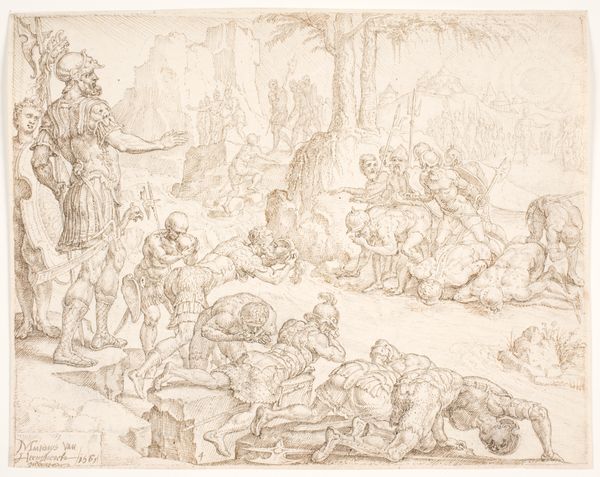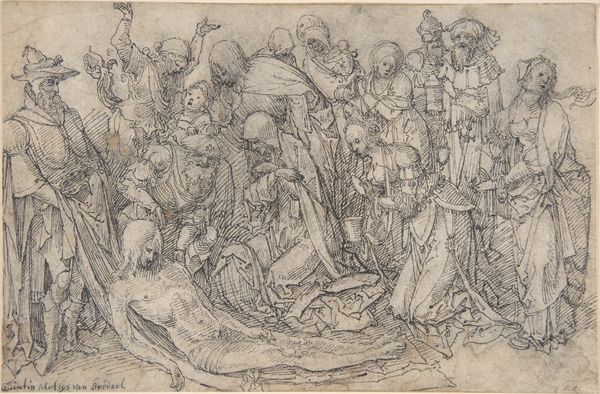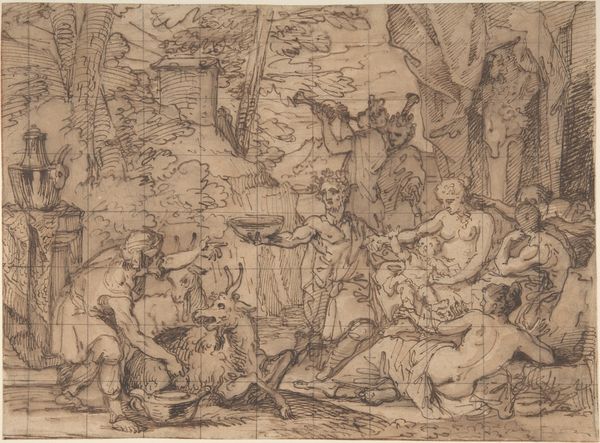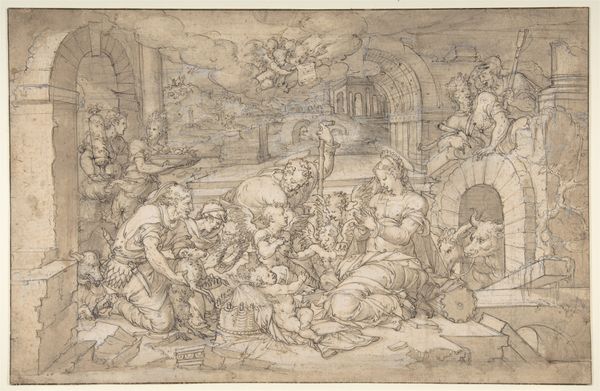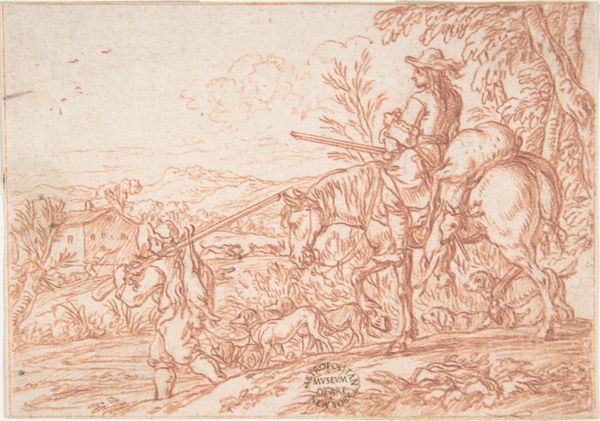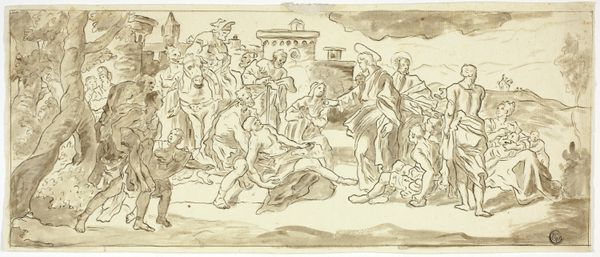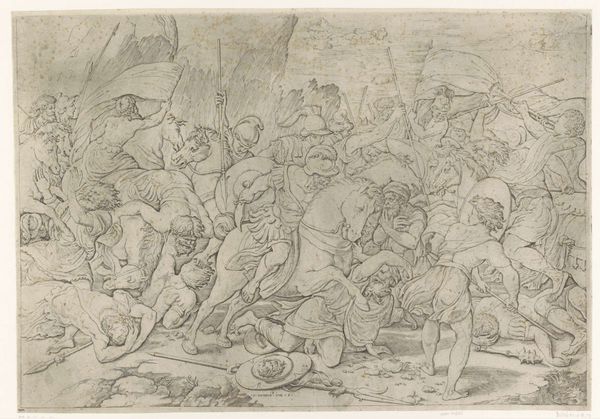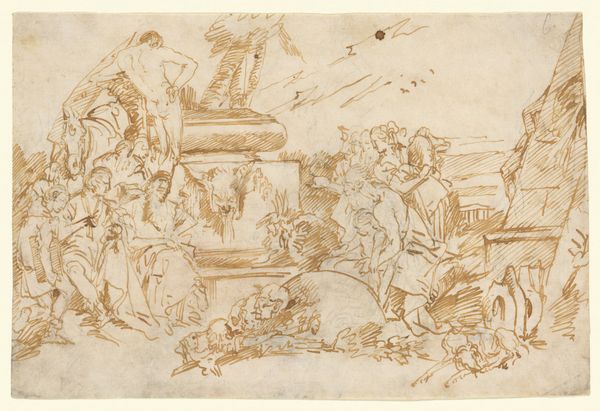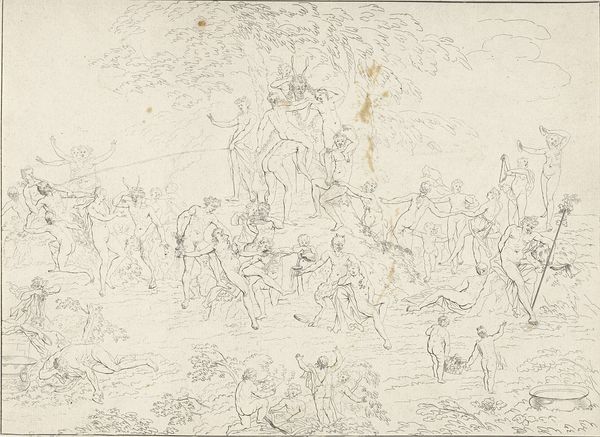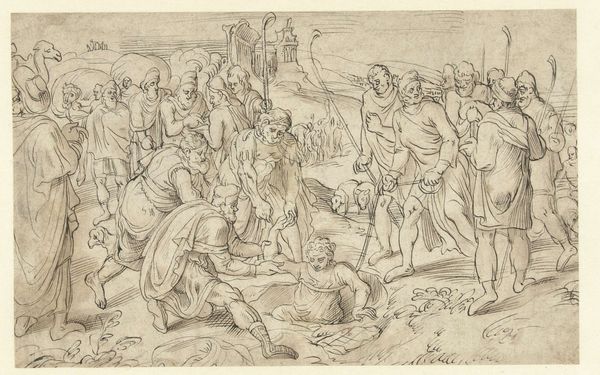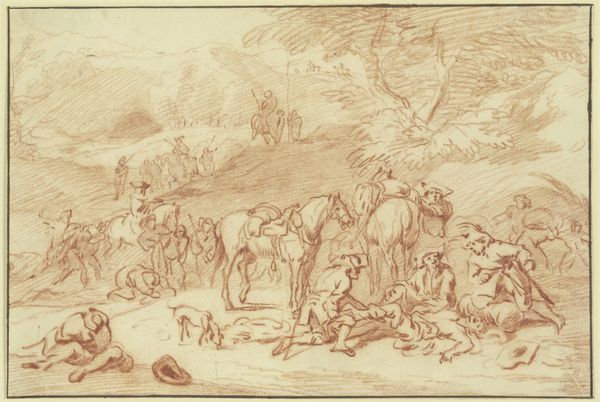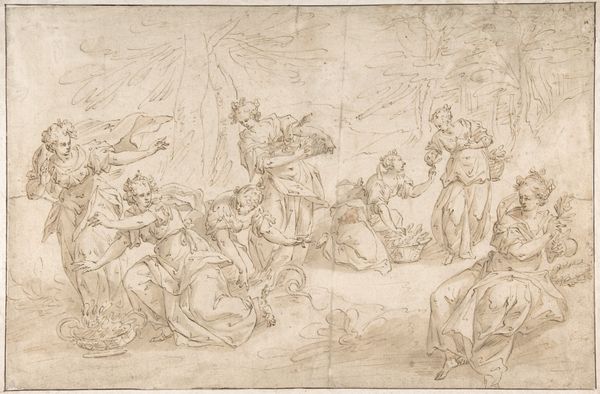
drawing, ink
#
drawing
#
baroque
#
landscape
#
figuration
#
ink
Dimensions: height 192 mm, width 247 mm
Copyright: Rijks Museum: Open Domain
Editor: Here we have Pietro Testa’s "Bacchanaal van putti," made around 1640, rendered in ink. It’s a charming scene, full of cherubic figures in a landscape, but something about the use of line makes it feel almost… frenetic. What jumps out to you? Curator: For me, it’s about understanding the physical and economic conditions that allowed Testa to create this piece. Who was his patron, and what materials were accessible to him at this moment? The quality of the ink, the type of paper, tell us about Testa’s world and how his labor contributed to it. Consider also the status of drawing itself. Was it preparatory for something larger? Or a standalone artwork. Editor: That’s fascinating. So you see the materiality of the artwork as a reflection of the means of artistic production? Curator: Exactly! Think about how the ink itself was produced, distributed, and purchased. The labour of all these people made Testa’s drawing possible. What kind of social class would appreciate it? And let's examine his use of materials to translate Bacchic revelry – it shows a mastery that speaks of academic training, a world separate from raw Bacchic abandon. Editor: I hadn’t thought about the commerce aspect so much. It puts a completely different spin on it, viewing it as product and record rather than purely artistic expression. Curator: It is both! The interplay is essential. It broadens our understanding beyond aesthetics to the concrete world which the artist and even his Bacchic "putti" lived. Editor: It gives me a richer understanding of how the physical reality shapes the artistic vision and helps me move beyond an intuitive assessment of the artwork. Thanks for enlightening me! Curator: My pleasure! Keep seeking the connection between process, material, and context, and you'll be on the right track.
Comments
No comments
Be the first to comment and join the conversation on the ultimate creative platform.
